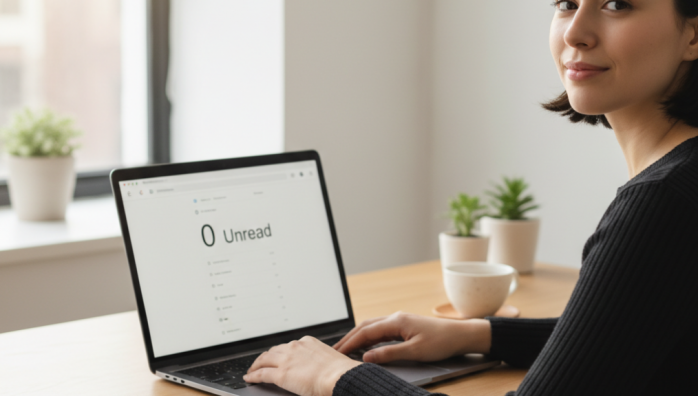Achieving Inbox Zero Daily Habit
by admin in Productivity & Tools 17 - Last Update November 17, 2025

I used to believe \'Inbox Zero\' was a myth, a productivity unicorn chased by people with far more self-discipline than I had. My inbox was a chaotic blend of urgent tasks, unopened newsletters, and a lingering sense of digital dread. Every time I opened it, my anxiety spiked. It felt less like a tool for communication and more like a to-do list written by a thousand other people. The change for me wasn\'t about finding a magical app; it was about fundamentally shifting my relationship with email.
The mindset shift that changed everything
Honestly, the biggest hurdle was mental. I stopped thinking about my inbox as a storage container and started treating it as a processing station. Like mail on a physical desk, nothing should live there permanently. Its only purpose is to be a temporary holding area for items that need to be sorted. Once I realized this, the goal wasn\'t just to have an empty inbox, but to have a clear mind, knowing that everything had been given its proper home.
From reactive to proactive
My old habit was to keep my email open all day, letting every new notification pull me away from deep work. It was a constant state of reaction. My new habit is built around intention. I now process my email in focused blocks—once in the late morning and once before I end my workday. The rest of the time, the tab is closed. This simple change alone gave me back hours of focused time each week.
My simple, 4-step daily processing ritual
When I open my inbox during a scheduled block, I don\'t just read messages. I process every single one, top to bottom, with a simple decision-making framework. I never open an email, read it, and then close it to deal with it \'later\'. Every email gets a decision right then and there.
- 1. Delete or Archive: The easiest step. Is this junk, an FYI I\'ve now read, or a newsletter I won\'t get to? I mercilessly delete or archive. This probably clears out 60% of my inbox in a few minutes.
- 2. Do (The 2-Minute Rule): This was a game-changer I borrowed from the Getting Things Done method. If a reply or action will take less than two minutes, I do it immediately and then archive the email. It\'s amazing how many \'tasks\' fall into this category.
- 3. Defer (To The Right System): This is the most crucial step. If an email represents a task that will take more than two minutes, I don\'t leave it in my inbox. I pull the task out and put it into my dedicated task manager. The email has delivered the message; its job is done. I then archive it. My inbox is not my to-do list. I had to repeat that to myself for weeks until it stuck.
- 4. Delegate: If the email is someone else\'s responsibility, I forward it to them with a brief note and—you guessed it—archive the original. It\'s no longer my concern.
Tools aren\'t the solution, but they can help
I’ve learned that no fancy app can fix a broken workflow. In the spirit of a minimalist digital setup, I use the most basic email client available. I\'ve turned off almost all notifications. The most powerful tool for me has been the \'unsubscribe\' button. I spent an afternoon unsubscribing from dozens of mailing lists, and now the daily maintenance is significantly lower. Less in means less to process.
What happens when I fall off the wagon
There are days—travel, sickness, a major project deadline—where I don\'t hit Inbox Zero. In the past, this would have caused a spiral of avoidance. Now, I just see it as a backlog. The next day, I apply the exact same 4-step process. It might take a bit longer, but the system is robust enough to handle it. It\'s about the consistency of the habit, not an unbroken chain of perfection. That perspective removed all the pressure and made the habit sustainable for me.














